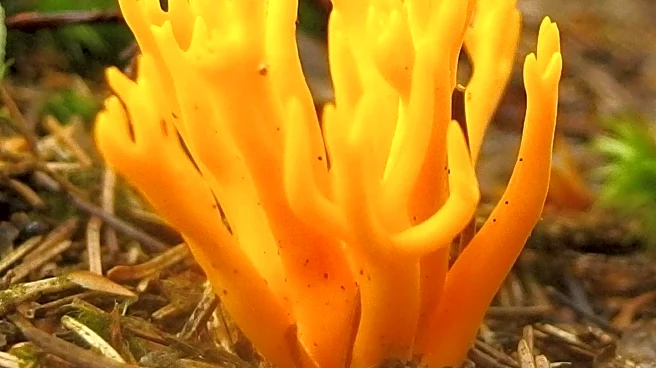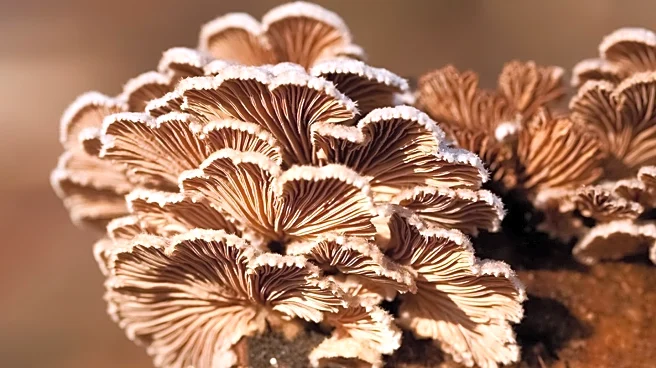What's Happening?
A rare fungus known as the Candelabra Coral has been recorded in Leicestershire for the first time. The discovery was made by Melinda Bell, a retired biology teacher, during a walk in Burrow Wood near Copt Oak. The fungus, which was thought to be extinct in the UK until its rediscovery in Suffolk in 2012, was found on a moss-covered log. The Candelabra Coral is recognized by its crown-like tips resembling castle turrets and feeds on dead and rotting wood. Geoffrey Hall from the Leicestershire Fungi Study Group noted that the fungus is a vital component of the woodland ecosystem, contributing to the decomposition and recycling of woody material. This sighting marks the most northerly record of the fungus, previously seen in Kent, Norfolk, Middlesex, Surrey, and Sussex.
Why It's Important?
The discovery of the Candelabra Coral in Leicestershire highlights the importance of fungi in maintaining healthy forest ecosystems. Fungi play a crucial role in decomposing organic matter, which helps recycle nutrients and supports biodiversity. The presence of this rare fungus may indicate changes in local environmental conditions or improvements in habitat quality. Understanding the distribution and ecology of such species can inform conservation efforts and forest management practices. The sighting also underscores the value of citizen science and local study groups in monitoring and preserving biodiversity.
What's Next?
Further research may be conducted to understand the ecological factors contributing to the appearance of the Candelabra Coral in Leicestershire. The Leicestershire Fungi Study Group might continue to monitor the area for additional sightings and study the conditions that support the growth of this rare fungus. Conservationists and ecologists could use this information to enhance habitat protection strategies and promote biodiversity in local woodlands. Public awareness campaigns might be initiated to educate the community about the significance of fungi in ecosystems.
Beyond the Headlines
The unexpected appearance of the Candelabra Coral raises questions about the impacts of climate change and habitat alteration on fungal distribution. As fungi are sensitive to environmental changes, their presence can serve as indicators of ecosystem health. This discovery may prompt further investigation into the effects of climate variability on fungal populations and their ecological roles. Additionally, the study of rare fungi can contribute to broader scientific understanding of species adaptation and resilience.











